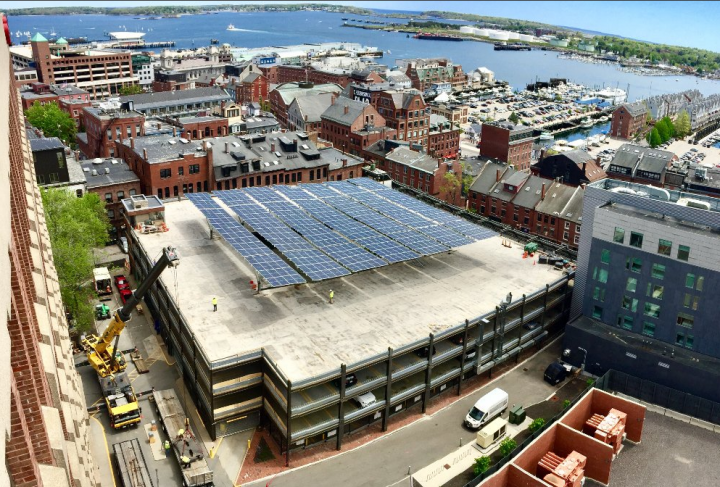There was once a time where solar power was so expensive that investors thought it only made sense to use it in spaceships. However, solar power prices are now becoming cheap enough that it is pushing both coal and natural-gas plants out of the picture at a faster rate than the market had once predicted. At least that’s what a Bloomberg New Energy Finance (BNEF) report concluded.
The research group predicted that solar is already competing with the cost of Germany and the United State’s new coal power plants and by the year 2021, solar will do so in fast-growing markets such as India and China.
Why is this significant? Well, it illustrates that green energy is becoming more prominent than experts had once expected. If this were to happen, global carbon dioxide pollution caused by fossil fuels could decrease after the year 2026. This, of course, differs from the International Energy Agency’s forecast, which predicted emissions to rise at a steady pace for decades to come.
As reported by Seb Henbest, the lead author of the BNEF report, “Costs of new energy technologies are falling in a way that it’s more of a matter of when than if.”
Additionally, the Bloomberg New Energy Finance report concluded that through the year 2040:
- Both China and India will act as the biggest markets for new power generation. The two countries will draw $4 trillion (39%) of all investments in the industry
- Offshore wind farm costs will fall 71%, thus making turbines that are based at sea another competitive form of generation
- There will be roughly $239 billion invested in lithium-ion batteries. This will make energy storage devices a realistic way of keeping both homes and power grids supplied efficiently. It will also increase the use of electric vehicles
- The natural gas sector is thought to harvest $804 billion, thus bringing in 16% more generation capacity.
Furthermore, electricity that is produced from photovoltaic panels cost nearly a quarter of what it did in 2009 and BNEF predicts that it will decrease another 66% by the year 2040. On the other side of the equation, BNEF looked at onshore winds, which have dropped in price 30% over the past eight or so years. By the time BNEF comes to the end of their forecast horizon, onshore wind is predicted to fall another 47%.
This is significant as it suggests that even in countries such as China and India, who are constantly installing coal power plants, solar will start to offer cheaper electricity prices as early as 2020.
“These tipping points are all happening earlier,” said Henbest, “And we can’t just deny that this technology is getting cheaper than we previously thought.”
According to BNEF, coal will suffer the most out of the transition, with 369 gigawatts of projects waiting to be cancelled. This is equal to roughly the entire generation capacity of Germany and Brazil combined.
The capacity of coal will even plummet in the United States, despite President Donald Trump vowing to focus more on the fossil fuel industry. In 2040, BNEF predicts that the United State’s coal-power capacity will be roughly half of what it is right now. Why? Older power plants are now shutting down and are being replaced with cheaper and less polluting sources (ie: gas and renewable energy sources).
When looking at the forecast for Europe, BNEF predicted that capacity will decrease by 87% due to environmental laws increasing the cost of burning fossil fuels. Thanks to the Paris Agreement, governments are going to start to work on the reduction of emissions. This, as the BNEF reported, will diminish the world’s yearning for coal starting in 2026.
Henbest remains hopeful, as he stated, “Beyond the term of a president, Donald Trump can’t change the structure of the global energy sector single-handedly.”
Essentially the expansion of zero-emission energy technologies will allow the industry to tackle the problem of pollution much faster than it is usually accepted. Contrary to what President Donald Trump believes, global warming is very much real, and this will help to slow down the rapid pace of climate change. However, according to the BNEF report, there will need to be an additional $5.3 trillion of investment in order to bring a sufficient amount of generation capacity to keep temperature increases to a manageable 2 degrees Celsius, or 3.6 degrees Fahrenheit.
All together, BNEFs data illustrates that wind and solar are on the rise to becoming major electricity sources, despite investors believing that they are too expensive in comparison to conventional fuels.
The Bloomberg New Energy Finance report concluded that wind and solar power will make up nearly half of the world’s installed generation capacity by the year 2040. This is up from the 12% now, and wind and solar will account for 34% of all the power generated in the world, which is significantly higher than the 5% it accounts for right now.
Featured Image: Twitter.com











